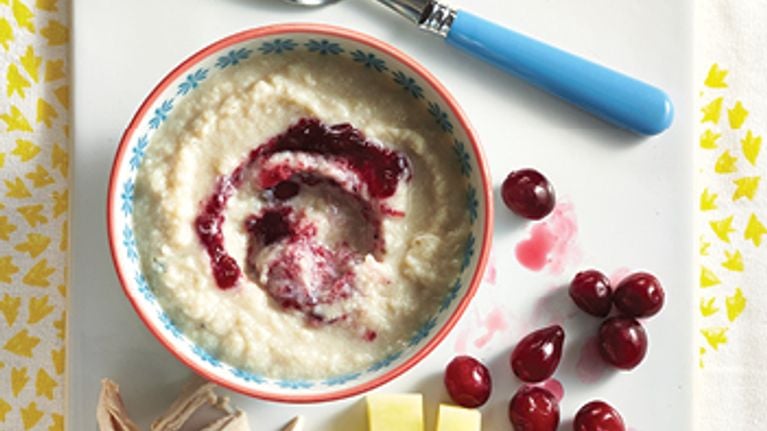Making a puree with turkey can open up new possibilities in the kitchen. Whether you want to add silkiness to soups and sauces or make turkey more palatable for those with chewing difficulties, a creamy turkey puree is key. It may seem tricky to get a smooth puree without lumps or texture. But follow this simple guide, and you’ll be pureeing turkey like a pro in no time!
At [company], we love finding new ways to savor old favorites. Pureed turkey lets us spice up recipes from soups to burgers. Read on for pro tips step-by-step instructions and answers to common puree questions.
Choose the Right Turkey Meat
Opt for tender cuts of boneless turkey, like breast meat or tenderloin. The more tender the cut, the silkier your puree. Turkey legs or wings have more connective tissue and can toughen when cooked.
Dark meat like thighs and drumsticks has more fat and collagen. This makes it ideal for adding moisture and richness to purees. Go for dark meat if you want a creamier, more unctuous puree.
Cook Thoroughly But Gently
To get the best pureed texture, cook the turkey gently using moist heat Methods like braising, boiling, and slow cooking work great. High dry heat can make the meat dry and tough.
Cook until the internal temperature reaches 165°F. Undercooked turkey won’t puree smoothly. Overcooking can make it stringy. So keep a close eye on doneness.
Chill It Down
Pop the cooked turkey straight in the fridge. Let it chill for at least 2 hours or overnight. Cold turkey chops and purees much finer than warm. Smaller pieces also blend more smoothly.
Once chilled, dice the turkey into 1-inch chunks before pureeing. This lets your blender or processor work its magic.
Puree Powerfully or Gently
Use a high-powered blender or food processor to get the smoothest, silkiest puree possible But a regular blender works too Just add a touch more liquid.
For a coarse puree with small chunks, pulse rather than continuously blend. Or add cooked veggies like diced carrots or peas after pureeing. The options are unlimited with turkey!
Add Liquid to Loosen
Pureeing dry meat alone can leave a thick, gluey paste. Add liquid as you blend to loosen the puree. The thinner the liquid, the smoother your results.
Broth, cooking liquid from the turkey, formula, breastmilk, or water all work excellently. Stick to 1/4 cup per cup of turkey. Adjust to get the consistency you want.
Store and Reheat Properly
Refrigerate turkey puree for 3-4 days max. Freeze for longer storage. Thaw overnight in the fridge before using. Reheat gently in a saucepan or microwave until warm, not hot.
And that’s the key to perfect turkey purees! Follow these tips for customizable purees from coarse to velvety smooth.
Turkey Puree FAQs
Still have questions about this tasty kitchen tactic? Here are answers to some common turkey puree queries:
Can I use a blender instead of a food processor?
Yes, a regular blender will puree turkey just fine. The texture may be slightly coarser unless you add extra liquid.
How do I store turkey puree?
Refrigerate for 3-4 days or freeze for up to 3 months. Freeze in ice cube trays for easy portioning.
What can I use turkey puree for?
Soups, sauces, casseroles, baby food, turkey patties or balls, fillings, and more!
Can I puree the skin and bones too?
No, remove them first. Bones can splinter and skin makes the texture unpleasant. Stick to meat.
Can I season the turkey first?
Yes! Season simply with salt, pepper, herbs, etc. before cooking. Avoid over-seasoning.
Is turkey puree good for those with chewing issues?
Yes, it creates a smooth texture that’s easy to swallow. Consult a doctor first.
Can I puree turkey with vegetables?
Absolutely. Blend cooked veggies like carrots, peas, or sweet potatoes with the turkey.
Should I use fresh or leftover turkey?
Either works fine! Use fully chilled leftover turkey within 3-4 days.
Can I use turkey cooking liquid to puree?
Yes, turkey cooking liquid has great flavor. Just strain out any veggies, bones, etc. first.
Can I add spices to pureed turkey?
Spice it up! Start with small amounts of mild herbs and spices at first.
Can a hand blender work?
Yes, a stick blender can puree turkey. The texture may be a bit chunkier than a stand blender.
Do I have to add liquid when pureeing?
Not necessarily. But liquid gives a smoother consistency. Start with 1-2 tbsp per 1 cup turkey.
We hope these pureeing tips help you rediscover turkey in creamy new ways. Share your own tricks and favorite puree recipes in the comments below!

Turkey & green beans puree: a Thanksgiving baby recipe
Prep time:
Cooking time:

